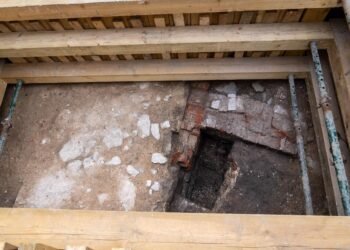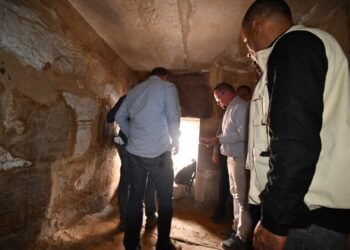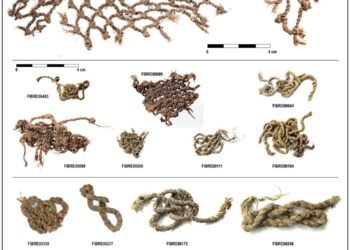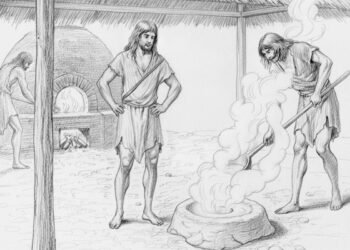Archaeologists from the Czech Institute of Egyptology at Charles University in Prague have made a significant discovery during excavations at the Abusir archaeological site in Egypt. The team uncovered a well-preserved tomb belonging to an ancient Egyptian dignitary named Djehutyemhat, a royal scribe who lived during the turbulent period of the 6th and 5th centuries BCE.

This newly discovered tomb, described as “richly decorated,” is located in the western part of Abusir, serving as a cemetery for high-ranking officials and military commanders from ancient Egypt’s 26th and 27th dynasties.
The burial site, dating back to the middle of the 1st millennium BCE, was identified by archaeologists led by Miroslav Bárta. Djehutyemhat’s tomb, a medium-sized shaft, offers information about the historical changes occurring in Egypt during the mentioned period. The dignitary’s role as a royal scribe is highlighted.
According to the Czech Institute archaeologists, the individual lived during a turbulent period in ancient Egyptian history when the region was invaded by Persian forces.
The tomb’s upper section, which was above ground, had suffered destruction in antiquity. However, the burial chamber, located almost 50 feet below ground, revealed intricate details of ancient Egyptian burial practices. The northern wall of the chamber is covered with spells aimed at protecting against snake bites, indicating the prevalent threat of venomous snakes during that era. Strikingly, these spells portrayed snakes not only as dangerous but also as powerful protectors of the deceased and their mummy.
The southern and western walls featured depictions of ritual offerings, while the ceiling illustrated the sun’s journey across the sky, accompanied by hymns. At the heart of the burial chamber, a large stone sarcophagus with hieroglyphic inscriptions and depictions of gods was discovered. Among the inscriptions were excerpts from the Book of the Dead, an ancient Egyptian funerary text containing spells and magic formulas believed to guide the deceased in the afterlife.
Jiří Janák, an expert on the interpretation of ancient religious and magical texts, explained the symbolic significance of the goddess of the West, Imentet, depicted inside the sarcophagus. She represented a protector, guide, and symbolic mother of the deceased.
Despite being robbed, likely in the 5th century CE, Djehutyemhat’s tomb yielded valuable findings. Anthropological analysis of the skeletal remains indicated that the dignitary died at around 25 years old, showing signs of occupational health problems, including spinal wear from sedentary work, and severe osteoporosis. The presence of similar health issues in other nearby tombs suggests a potential familial connection.
While the tomb contained relatively few artifacts, a collection of pottery, including bowls and jars, was recovered during excavations. The meticulous attention to detail in the tomb’s decorations indicates a profound effort to ensure Djehutyemhat’s smooth journey into the afterlife, reflecting the beliefs and rituals of the time.






















